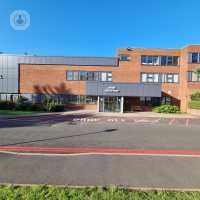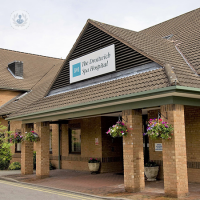Radiofrequency ablation (RFA)
Mr Donald Adam - Vascular surgery
Created on: 05-25-2017
Updated on: 04-27-2023
Edited by: Conor Lynch
What is radiofrequency ablation (RFA)?
Radiofrequency ablation (RFA) is a minimally invasive procedure performed under local anaesthetic, which uses the application of heat to minimise or completely stop pain transmission. The nerve causing the pain is burned, or ablated, using an electrical current to target a specific area. This ablation stops the transmission of nerve signals to the brain, thus providing relief.

Why undergo radiofrequency ablation?
Patients who suffer from chronic pain, or conditions such as arthritis and spondylosis, may benefit from immediate pain relief with little to no recovery time. RFA is performed as a day case so there is no need for overnight hospital stay. It can provide relief to those with neck, back, knee, pelvic, and nerve pain. Pain can be debilitating and RFA allows increased function, meaning the patient’s quality of life is significantly improved.
What does it involve?
The procedure is performed while the patient is awake, as a local anaesthetic is given to numb the particular area where treatment will be applied. A fluoroscope (an imaging technique that allows the doctor to obtain real-time X-ray images during the procedure) is used to help insertion of a needle into the target area. The fluoroscope allows the doctor to make sure the needle reaches the correct location.
When the needle is in the right place, a radiofrequency (electrical) current is passed through the needle, which is hollow inside, burning the required area. The burn is very small and the needle allows the doctor to be accurate. This current destroys the part of the nerve which produces pain signals. Multiple burns can be made in order to fully destroy the nerve. After the procedure is finished, patients can return home, but they should make arrangements for someone to escort them.
Pain may be felt after the procedure, usually for around two weeks. However, after this, pain should be significantly reduced or relieved completely. A follow-up appointment will be scheduled to check progress and discuss further treatment, if necessary.
How to prepare for radiofrequency ablation
Before the treatment, a medical history will be taken to see if the patient is suitable, and where the procedure should be performed. Medication will also be discussed, and those who take aspirin or blood-thinners (such as ibuprofen) as long-term medication will be told to stop several days before the procedure.
What is recovery time like?
Patients are generally back to work within the next 24-72 hours. Immediately after the procedure, they should be escorted home, and once at home, they should rest and recover. RFA is a safe and simple procedure which is usually highly effective. Pain relief usually lasts between nine months and two years, and the procedure can be done again.












